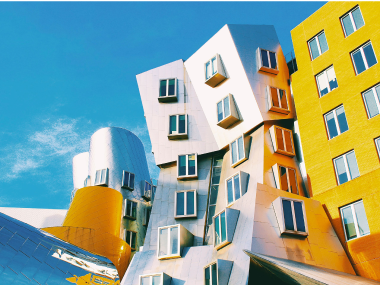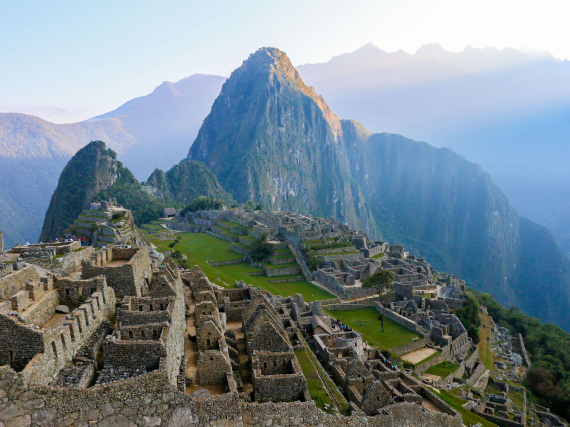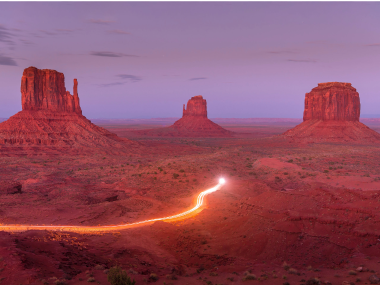State capitol buildings not only serve as headquarters for state government, but they are also oftentimes beautiful, historic structures. In some cases, they are even reportedly haunted. But with 50 state capitols to choose from, it might be difficult to narrow down which buildings are worth the visit. Check out our ranking of state capitol buildings that architecture fans and history buffs are sure to enjoy.
Pennsylvania State Capitol – Harrisburg, Pennsylvania

The third time’s the charm when it comes to capitol buildings in the Keystone State. After a fire destroyed Pennsylvania’s Capitol in 1897, a makeshift building was erected to house government action for the next nine years. The current Capitol was completed in 1906, with President Theodore Roosevelt declaring it to be “the handsomest state Capitol I ever saw.”
Designed by Philadelphia architect Joseph M. Huston, the Beaux Arts-style building (with Renaissance Revival elements) took cues from classic European architecture. The rotunda was inspired by the Paris Opera House, while the dome was modeled after St. Peter’s Basilica. The interior, which features intricate stained glass and mahogany woodwork, remains beautifully intact 120 years later.
Wisconsin State Capitol – Madison, Wisconsin
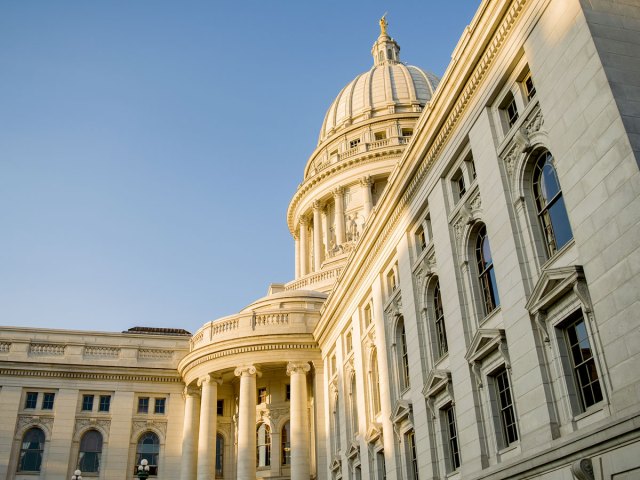
The Wisconsin State Capitol is best known for its distinct X-shape formed by four separate wings, but we also think it’s one of the most beautiful state Capitols. After the spectacular structure was completed in 1917, a subsequent law prevented other nearby buildings from surpassing its height of 284.4 feet, making it the tallest building in Madison.
The Capitol was built on an isthmus — a narrow stretch of land between two lakes — and contains 43 different types of stones from six countries and eight states. It was inspired by the council chambers in Doge’s Palace in Venice, which helps explain the grandiose decor inside. The building is open to the public for tours daily — don’t miss the sixth-floor museum and observation deck with spectacular views of the city.
West Virginia State Capitol – Charleston, West Virginia
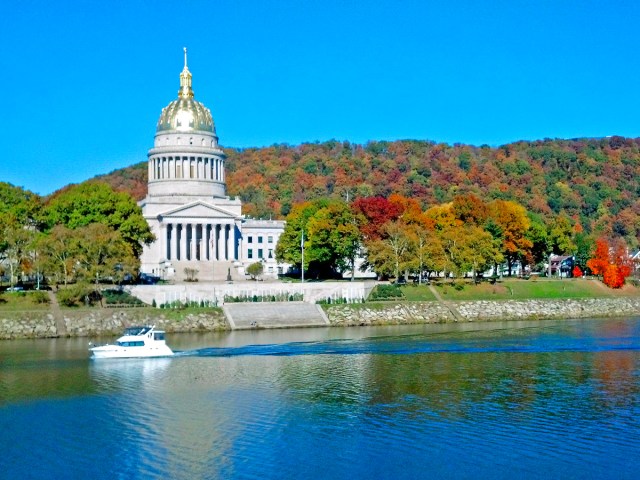
Designed by celebrated turn-of-the-century architect Cass Gilbert — who also designed the U.S. Supreme Court Building — West Virginia’s Capitol building harkens back to the days of the ancient Greeks. Built from 1924 to 1932, it features a Neoclassical design that showcases a symmetrical limestone facade and prominent columns. The building’s most iconic feature, however, is its massive dome, measuring 239 feet and covered in gold and copper leaf. The dome’s spire and intricate design set it apart from other capitols, especially at night when its golden facade is illuminated.
Iowa State Capitol – Des Moines, Iowa
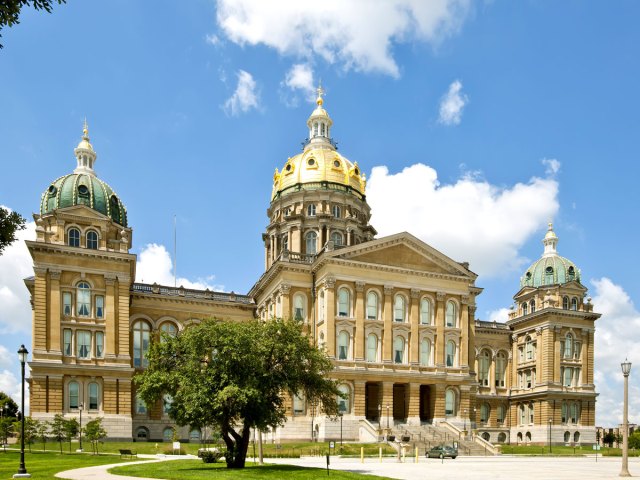
Our list of best state Capitol buildings continues with Iowa’s showstopper, which features four towering domes surrounding a central 275-foot-tall dome covered in 23-karat gold. The building’s interior is equally mesmerizing, particularly the law library, which houses an ornate spiral staircase. Fittingly, historic art and artifacts are spread throughout the building, from the handmade doll replicas of every governor’s wife to the scale model replica of the Battleship Iowa. Free tours of the building are available daily, but dome tours must be booked in advance.
Kentucky State Capitol – Frankfort, Kentucky

Completed in 1910, Kentucky’s Capitol building was designed in the Beaux Arts style, with an interior that reflects architect Frank Mills Andrews’ love of French design. The State Reception Room was created to host grand ceremonies, complete with intricate murals that were hand-painted to resemble hanging tapestries. The marble interior was sourced from Georgia, Tennessee, and Italy. In 2009, the massive dome was restored to its original glory, with the addition of LED lights that change colors, giving the Capitol an ever-changing appearance throughout the day.
Massachusetts State House – Boston, Massachusetts
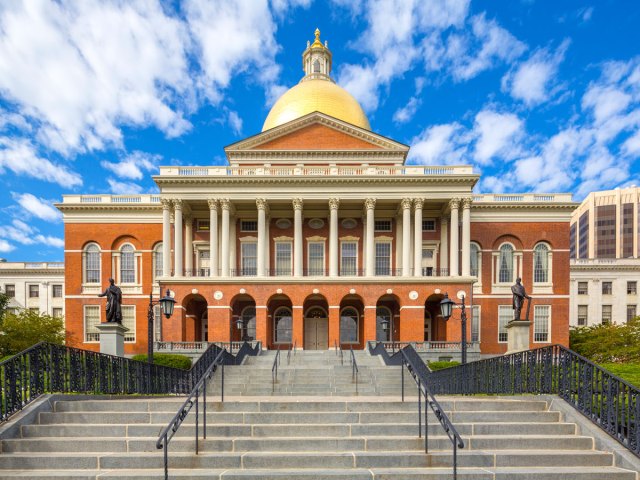
The Massachusetts State House is instantly recognizable thanks to the iconic gold dome atop the Neoclassical-federal style building. We happen to think it’s one of the nicest state Capitols, too. Designed by American-born architect Charles Bullfinch and built in 1798, 15 years after the end of the Revolutionary War, the State House was ironically inspired by the architecture of London. As one of the stops on Boston’s Freedom Trail, the Capitol offers free tours of the building and grounds, which contain various famous statues representing U.S. history.
Connecticut State Capitol – Hartford, Connecticut

The Connecticut State Capitol is an imposing Gothic-style building overlooking Bushnell Park in Hartford. Completed in 1879, the marble structure features ornate bas-relief sculptures that depict key figures and moments in Connecticut’s history. It was formerly adorned with a bronze statue named “The Genius of Connecticut,” but the Capitol’s trademark sculpture was donated to the federal government and melted for ammunition during World War II. Today, the Capitol building and the grounds remain open to the public for guided and self-guided tours.
Minnesota State Capitol – St. Paul, Minnesota

The Minnesota State Capitol put a young Cass Gilbert — the same architect behind West Virginia’s Capitol — on the map. At the time he designed it in 1895, Gilbert was an up-and-coming architect from Minnesota, and by the time it was completed in 1905, his career had taken off. Gilbert’s meticulous Renaissance Revival design featured marble from Georgia, a nod to the Minnesotans who fought in General Sherman’s campaign during the Civil War.
The building’s most arresting feature is the massive dome, which recalls the Basilica of St. Peter in Vatican City. It is flanked by a sculpture of four golden horses, representing the four elements of nature. Guided building tours allow rooftop access to see the magnificent horses up close.
Virginia State Capitol – Richmond, Virginia
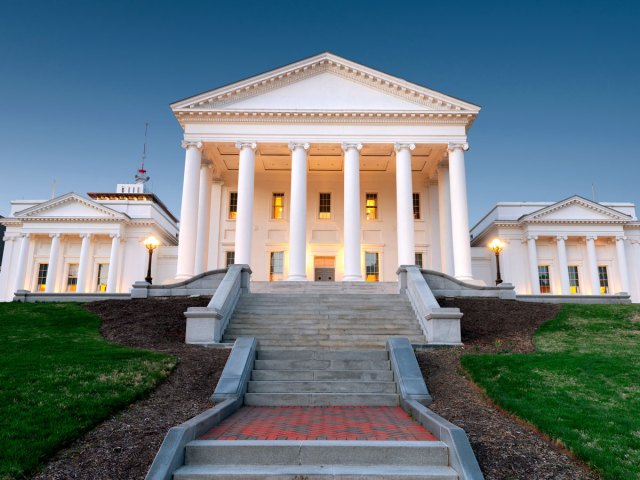
Housing the oldest legislative assembly in the U.S., the Virginia State Capitol was designed by President Thomas Jefferson. Jefferson sketched his first design for the building in the mid-1770s, although his idea didn’t come to fruition until 1788.
Inspired by Greek and Roman temples, Jefferson conceptualized the building by creating a scale model, which was considered a radical and extravagant practice at the time. However, Jefferson’s attention to detail resulted in one of the most visually arresting capitol buildings in the country. Free guided tours are available Monday through Saturday.
Rhode Island State House – Providence, Rhode Island
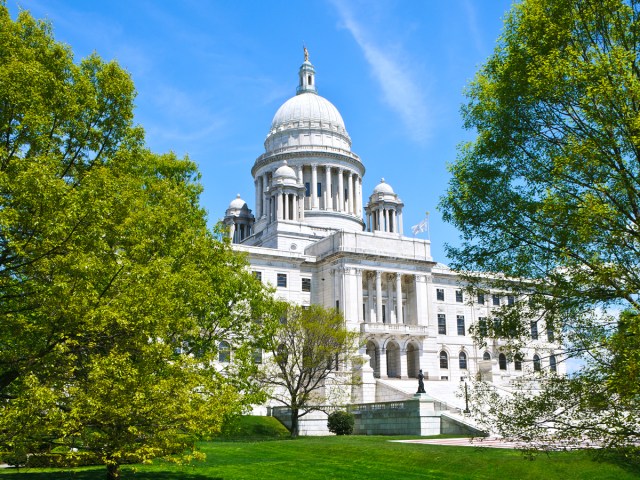
Standing high on Smith Hill, the Rhode Island State House looms over the city of Providence below. When it was built at the turn of the 19th century, Rhode Island was the richest state in the nation on a per capita basis. So, during the construction of the capital, no expense was overlooked, including installing electricity, importing pricey marble, and constructing the fourth-largest self-supporting marble dome in the world.
In addition to housing the Senate and House Chambers, the State House also contains important historical artifacts, including documents in the Rhode Island Colonial Charter Museum and a hand-painted portrait of George Washington.
Illinois State Capitol – Springfield, Illinois
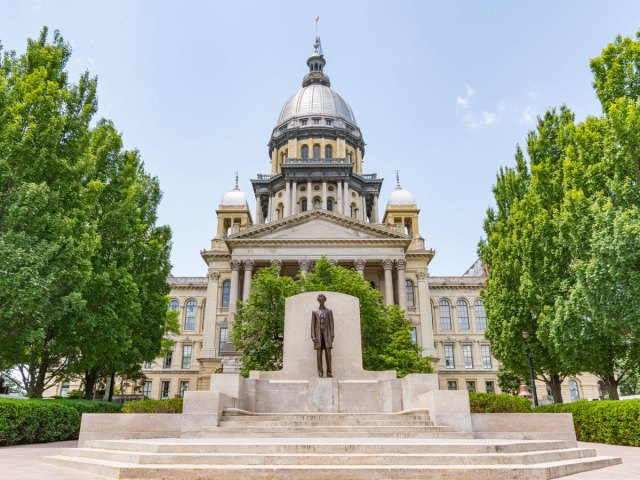
The creation of a new Illinois State Capitol building was necessary due to Illinois’ rapid population growth in the mid-19th century. During construction, the site famously housed a coal mine, which was discovered during excavation and subsequently mined to heat the building. The tallest domed Capitol in the country, the statehouse hosted its first legislative session in 1877.
Though it’s not the tallest state Capitol building — that honor goes to the Louisiana State Capitol in Baton Rouge — Illinois comes close. It’s famous for its 405-foot-high dome containing stained glass artwork on its interior. Balcony seating is available to visitors who want a front-row seat to Illinois politics.
Georgia State Capitol – Atlanta, Georgia

Mixing Neoclassical and Renaissance Revival styles, the Georgia State Capitol is filled with history. Built on the site of Atlanta’s former city hall and courthouse in 1889, the stately building features Corinthian columns and a copper statue named “Miss Freedom,” which bears a resemblance to the Statue of Liberty and was erected in remembrance of state veterans.
When the Capitol was built in 1889, it was the tallest building in the state, but today Atlanta’s skyscrapers dwarf the 272-foot structure. In the 1950s, gold was mined in state and carried to Atlanta in wagon trains, after which Italian artisans applied it by hand to the Capitol’s dome, giving it the eye-catching exterior we see today.
New York State Capitol – Albany, New York
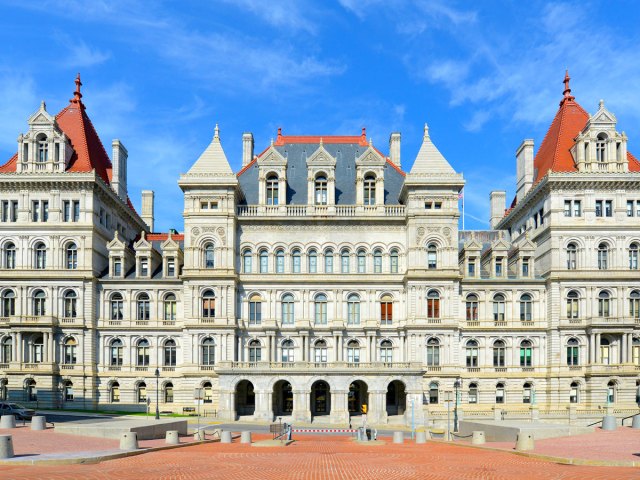
The seat of the New York government since the 1880s, the New York State Capitol took five architects to design and a team of masons 30 years to hand-build the carved stone building. We think you’ll agree it’s one of country’s prettiest state capitols — for proof, look no further the Million Dollar Staircase, built for $1.5 million at the time (equivalent to over $30 million today) and emblazoned with the carvings of 77 famous faces. Open to the public for guided daily tours, the building is also known for its fair share of ghost sightings and is home to haunted tours during October.
Washington State Capitol – Olympia, Washington
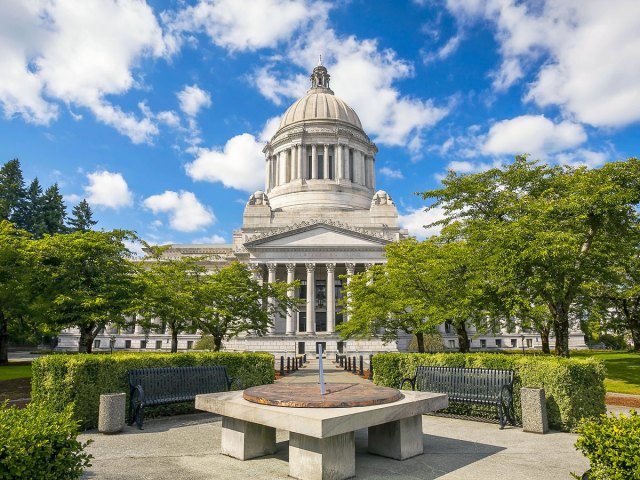
The brainchild of New York architects Walter Wilder and Harry White, the Washington State Capitol Campus was the winning design from a contest held in 1911. Wilder and White proposed five separate structures to meet Washington’s governmental needs, including the Legislative Building, which contains the state Legislature and the office of the governor.
Also not to be missed are the Capitol Campus Gardens, home to a grove of cherry trees and the largest English Oak in the country. The Capitol is best visited in the spring when the cherry blossoms are blooming, but various tours of the campus buildings and gardens are available daily.
Texas State Capitol – Austin, Texas

Everything’s bigger in Texas — including the Texas State Capitol. Built in 1888 to a height of 311 feet, it is the largest state capitol building and stands 14 feet taller than the U.S. Capitol. The Capitol, situated on the end of Congress Avenue, is a city landmark, so much so that local laws protect certain viewpoints from impinging on its visibility throughout Austin.
Constructed using 188,000 cubic feet of Texas pink granite, the building is perched on 22 acres of immaculately landscaped grounds, including a lovely oak-tree promenade. Inside, don’t miss the gallery, where whispers can be heard across the massive dome.
More from our network
Daily Passport is part of Inbox Studio, which publishes content that uplifts, informs, and inspires.
